The best mountain bike power meters come in various shapes, sizes and applications. Measuring power is now accepted as the most accurate metric for making sure your training is on target (or not) but it’s definitely road riding that’s been leading the way in development. While most Tarmac-based human torque meters also have an off-road option, clearance issues and range choices mean it’s not a straight comparison.
Power meters have become more accessible over the past few years thanks to new technology and a host of disruptive competitors who have helped drive prices down. There are five standard power meter configurations currently available, which measure power at the rear hub, crank spider, crank arms, bottom bracket or pedals,
While each of these options differs when it comes to price, compatibility, accuracy and weight, we've put together a round-up of the best options to help streamline the buying process.
Don't know where to start? Well, skip to the bottom where we have put together a helpful guide on how to choose the best mountain bike power meters.
Best MTB power meters
Why trust BikePerfect
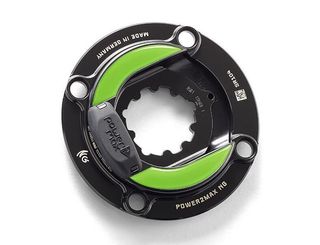
German brand Power2Max isn’t just one of the few brands to offer a decent range of power meter options for mountain bikes, it also delivers excellent user friendly, but very comprehensive performance at a killer price.
Whatever compatibility-option you go for, the measurement occurs in a rechargeable battery-powered spider block that retrofits onto the relevant crank spline pattern. Most come in single or double options as well as standard or Boost offset, so even older bikes are covered. You can also get FSA cranks in either carbon fibre SL-K or alloy Afterburner formats.
Measurement is single-sided but as the NGeco hardware is pretty much identical to the more expensive NG version there’s the option to upgrade the software later to add left/right balance and other data for a relatively small cost. ANT+ and Bluetooth Smart communication is stable and consistent with self-calibration and temperature monitoring making set up easy. Power2Max (and licensed FSA units) have always been rock solid reliable however grim the weather or long the usage span when we’ve tested them. It records data from both legs not just left or right which makes it cracking value even after you’ve swallowed the cost of a software upgrade to get the most from the unit. While it’s a heavier and more expensive solution than a left-arm sensor, the fact it’s spider-mounted means no worries about chainstay clearance either.
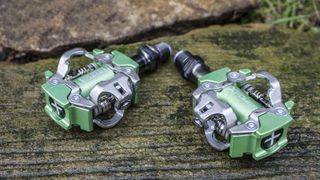
SRM is considered a pioneer when it comes to power meters with a history spanning over 30 years and X-Powers represent the brand's first attempt at capturing market share in the off-road space - mountain biking and gravel riding more specifically.
The SRM X-Power pedals weigh 170g a piece which is bang-on with regular Shimano XT SPD pedal. To prevent the intricate innards from getting damaged in the event of rock strikes, crashes or the like, SRM has housed the strain gauges and electronics in the spindle. They utilize lithium-ion batteries with a run time of approximately 30 hours and are charged by way of a single-pin magnetic connector located on the wrench flats - the LED battery charge indicators will flash green once fully charged.
There is both ANT+ and Bluetooth connectivity to ensure that the X-Power pedals are compatible with the best MTB GPS computers.

SRAM brought Quarq power meters into its family a few years back and the XX1 Eagle cranks use its latest superlight, hollow ’carbon tuned’ arms and ‘almost 30mm’ DUB axle for noticeably increased stiffness over previous SRAM cranks. Complete cranks also come with the excellent, chain nurturing, smooth driving, double-scoop X-Sync2 chainrings.
The Quarq spider benefits from 10 years of development and innovation and the result is super reliable. ‘AxCad’ means there’s no need for a cadence magnet. MagicZero calibrates automatically with a wide range of temperature compensation too so it’s super easy to set-up. Consistently stable, simultaneous ANT+ and Bluetooth Low Energy (BLE) communication mean it syncs easily and then stays hooked up with every smartphone and GPS unit we’ve paired it with.
Accuracy is around 1.5%, and it delivers left/right balance as standard. The Qalvin app is very user friendly too, with the potential to play with settings and properly geek out if you want. The coin battery can be replaced easily too. It only comes in 170 or 175mm crank arms but the price is excellent compared to other complete carbon setups, especially as they’re US-made.
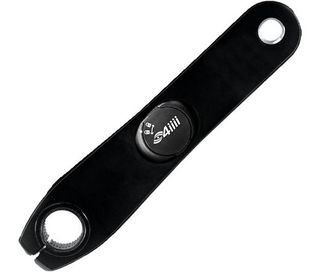
4iiii is a relative newcomer to the power meter scene but its already made a very strong impression in terms of cost-effective performance. You’ve got the option of buying either left or right-hand side hardware and then adding the other side later. While it’s understandably more expensive the right-hand option also avoids any potential issues with clearance on left-hand side cranks. You also have the choice of ‘PRECISION’ coin battery or ‘Podiiiium’ rechargeable battery versions.
They’re also one of the most accurate units around, transmitting with sub 1% deviation in ANT+ or Bluetooth Smart protocols (or both simultaneously). Testing with several 4iiii units on road and off has also proved they’re very reliable and stay consistently connected once synced. They also undercut Stages on single-arm pricing (but with less brand options) and Rotor on double-arm cost. Add that to all the configurations available and 4iiii is definitely the brand to beat in terms of wholly upgradeable Shimano/SRAM compatible wattage watching.

Rotor has been producing power cranks for a while but the latest Inpower versions are definitely the best yet. The top-line 2INpower version here is one of the only true double-sided meters available for MTB. That means true right and left power measurement for tuning your training/tracking rehab and you can even harvest data for the full 360 degree stroke for optimum orientation of Rotor’s elliptical rings in relation to your leg strength. Unsurprisingly given Rotor’s background they’re also the only meters designed to work with elliptical rings if that’s your preference. If you don’t need double-leg metrics then the INPOWER DM MTB gives a more affordable $750 / £629 option. Either way the torque sensors are effectively an extension of the axle end of the cranks so there’s no worry about frame clearances and the rechargeable battery sits inside the axle itself.
Rotor’s drilled arms are light for alloy and designed asymmetrically to level out overall power delivery at the chainring side, but they’re not as light or as stiff as carbon competitors. There are conventional or ceramic bearing Rotor bottom brackets for every frame type. Rotor are also planning a separate ‘INspider’ meter that can be switched between road or MTB cranks for multi bike convenience and value.
Whatever version you choose the electronic side of things is well sorted in the latest versions with ANT+ and Bluetooth Smart comms and a particularly comprehensive app for download and deciphering the unparalleled information it delivers. You’ll need some patience - or the help of a clued up coach - to get the best from all that data though.
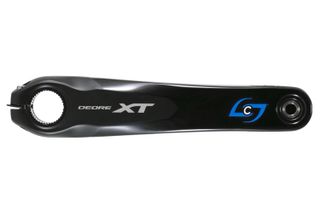
Stages broke the stranglehold of spider-mounted power meters with its simple-but-effective left-arm load cells and they’re the most evolved and well-proven option in that category. As well as pre-installed left arms in a wide range of bang up to date options they also offer a factory fit option where they install a cell on your existing crank if you send it in. We’ve had some fights with clearances on wider MTB back ends though so be sure Stages will clear your frame.
Prices also vary dramatically depending on the host crank with carbon, 30mm and SRAM DUB options being more expensive than other complete chainset or spider options where there are no clearance issues. Single-leg installation is easy though, it only adds 15g and accelerometer tracked cadence means no extra hardware on the bike though.
Software and syncing is excellent via Bluetooth Low Energy and ANT+ too, with active temperature compensation to keep the reliably solid connection consistently accurate within Stages +/- 1.5% claims. There’s no MTB equivalent of the double-sided Stages LR road options though so overall figures are always left-side doubled. Otherwise it’s fully IXP67 waterproofed and the coin battery gives a reasonable run time.
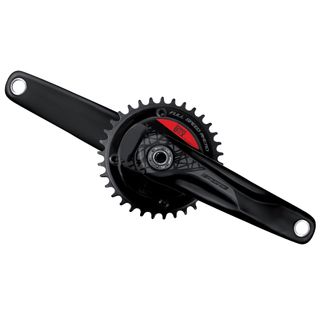
FSA’s wattage cranks are based on the NG MTB spider option from Power2Max which gives excellent user friendly reliability and easy set-up. The NG version includes all the optional data delivery upgrades such as left/right balance as standard rather than as an uncharge upgrade like the NGeco. Crank lengths are limited at 170 or 175mm too although the 30mm axle will fit any bike with the right bottom bracket kit. It uses a rechargeable battery rather than replaceable coins cells which is less wasteful but doesn’t let you carry a spare battery just in case.
In terms of operation it’s a very easy set up to use with dual ANT+ Bluetooth Smart transmission. Powerbox units we’ve used have always been super solid and consistent with whatever head unit or smartphone we’ve synced them to.
While it’s comparable with P2M’s own options, the set up is around double the SRAM/Quarq on the lighter XX1 crankset which offers the same features and slightly more than the full left/right driven Rotor. That makes the lack of an ECO option mounted on alloy cranks even more annoying for cost conscious riders as the FSA PowerBox Alloy is one of our favourite road cranks.
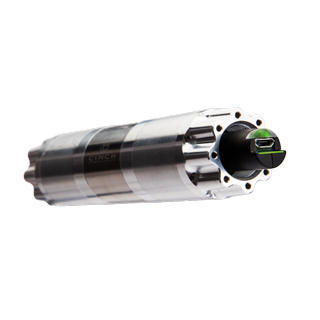
Race Face has adopted the very neat in-axle solution designed by Sensitivus and you can retrofit it to any Cinch-style crank from super-light Next SL to heavy duty SixC and Atlas units. It’ll also fit Easton road/CX cranks, too. The fat axle also gives plenty of room for battery capacity and the rechargeable cell will give around 400hrs between changes. It also protects it from weather and impacts as well as removing any concerns about chain stay clearance.
Communication is via ANT+ or Bluetooth Smart so it’ll talk to any GPS units, smart phones or other hardware, but we’ve not ridden the system ourselves and there’s limited information from users on line. There’s nothing damning about it though so we’ll assume most are having a positive experience. It only measures torque from the left leg though so overall accuracy is just based on one leg doubled rather than a true two-leg reading. That also makes it very expensive compared to left-leg systems from Stages and 4iiii or complete cranksets like SRAM/Quarq.
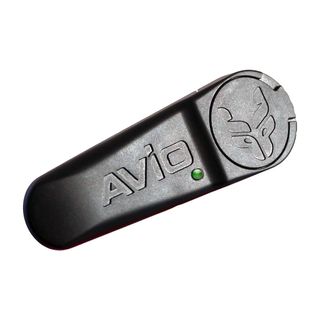
Avio's PowerSense pods are a super-cheap attack on the Stages/4iiii style left-hand crank sensor. At under $300 / £200 they’ve got the potential to do well too but options and compatibility are restricted. They only communicate with ANT+ which is fine for most GPS units but they won’t read straight to your smartphone via Bluetooth. There’s currently only one out-of-date Shimano option in their MTB range. You can send your current XT or SLX cranks in for upgrading though and they’ve got plans to expand the MTB range as soon as they have time. The sensor needs a flat back to work on though so it’s not compatible with Deore or most FSA, SRAM, Praxis, Truvativ, Race Face or Rotor arms.
We’ve not used the cranks yet so we can’t report on accuracy or syncing etc. ourselves either but user reports are decent. The sensor is relatively bulky though which is likely to cause even more clearance issues than Stages/4iiii on broad rear ends and fat chain stays. Battery life is also shorter at approx 100hrs and it’s heavier. If you’re after a Shimano-compatible bargain though it’s still worth keeping an eye on Avio developments.
How to choose the best mountain bike power meters
Trail conditions in the winter can vary massively from day to day and place to place. One day it might be freezing temperatures, icy and bright, the next you’re dealing with warm and wet and muddy. So the types of glove you should go for is somewhat dependent on the prevailing conditions you ride in, and also how susceptible you are to the cold.
Crank or pedals?
If we were talking about power measurement on the road we’d have a fairly long paragraph here about the pros and cons of crank-mounted measuring systems versus pedal-mounted systems. For MTB right now it’s really simple though as there’s only one option that conforms to the best mountain bike pedals configuration: the SRM’s X-Power pedals. There are still decisions to make about arm-mounted power meters though.
Spider or crankarm?
Crank measuring systems are largely split into two teams:
Team crankarm: where the load cell (which measures the torque being transmitted and translates that into your wattage output) is mounted on one (or both) of the crank arms. This design is used by Stages, 4iiii and Avio and it’s generally the cheaper solution. It can create clearance issues on a lot of chainstays and it’s more vulnerable to impact damage. There’s a split between cells that come ready-mounted to cranks/complete chain sets and cells that you DIY mount to your own cranks.
Team spider: (SRAM/Quarq, FSA PowerBox, Power2Max) where the load cell is mounted on the section that joins the crank arms and axle to the chainring. That keeps it out of the way of trouble (depending on the battery mount) and allows left/right power sampling from a single cell but it’s generally more expensive and heavier. Again there’s also a subdivision between cranks that come complete and spiders that you DIY mount. Race Face throw in a third option curveball though with their axle-mounted meter. This is a really smart place to put the sensor to keep it protected from impact and weather and it’s light. However it only works with Race Face (and Easton Road) cranks, and only as a left-hand side meter, which makes it expensive compared to crank-mounted competition.
Left, right or both?
Because one-sided meters only use one sensor, they’re generally a lot cheaper (almost half the price funnily enough) than meters mounted on both sides. The fundamental downside is that the wattage data they deliver is just the one-side reading doubled. To be fair, that’s normally pretty accurate, but if you do have one leg noticeably more powerful than the other - or you’re trying to track rehab of an injury - then that can obviously cause an issue.
What more important: accuracy, reliability or both?
What surprisingly isn’t an issue with power meters is accuracy and reliability. Some brands claim a +/- 1 per cent accuracy on their more expensive meters and +/- 2-3 per cent on their more affordable meters. Either way that’s more than accurate enough for tracking your training and as long as it’s consistent and repeatable, the actual numbers don’t really matter beyond boasting. The claimed accuracy almost always tallies when tested against other meters too. With self-calibration and temperature compensation built into most meters, they’re super reliable and remarkably consistent for such a sensitive, high tech piece of equipment under so many different loads and stresses.
What about the price?
The other bit of great news is that while spending more tends to get you more in terms of features, double-sided measurement and other on board analysis, the best cheap meters still deliver the essentials really well. Stages kicked off cost-effective measurement with its arm-mounted sensors and UK brand Avio has price-killing potential if it expand its PowerSense crank range, but 4iiii has the lead with pricing and upgradeability on arm-based systems right now. Spider-based systems are generally more expensive than a crank set up if you’re upgrading but if you’re building from new then getting a whole chainset makes most sense. Interestingly while FSA are a top value option on road they only have a really expensive carbon off road version. That leaves SRAM/Quarq as a great carbon option for basic measuring. Rotor offers true double-arm measurement with its 2INPOWER set up as well as a cheaper single-arm INPOWER choice. NGECO spider-only options from Power2Max definitely lead the way when it comes to multi-brand versatility and upgrade value though.
What fits?
The one big thing to check before handing over your cash and the hassle of an install is to check the unit actually fits. There tends to be a lot more going on around bottom brackets and chain stays on MTBs than there is on road bikes and some units - particularly back-of-arm cells - simply won’t fit in the available gaps. You’ll also need to check crankset units fit with your current bottom bracket and sync with your GPS or factor in the price of new ones with your overall costings.
Most manufacturers will help where they can but don’t expect their information to be exhaustive or flawless. That makes buying from your local shop who can physically check that the product fits, help you with your install and work through any teething troubles worth a lot more than saving a few per cent online.


